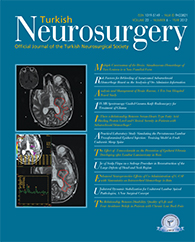MATERIAL and METHODS: A retrospective review of 630 consecutive cases of subarachnoid hemorrhage (SAH) at a major medical center was conducted, of which 458 were included for analysis. Sixty three cases of in-hospital pre-intervention rebleeding were identified. Chi-square or Mann-Whitney tests were used to screen for possible risk factors and values of the associated risk factors were assessed by logistic multivariate regression.
RESULTS: The identified risk factors were: short time interval between the first attack and hospitalization, gender (males were more susceptible), poor Hunt-Hess grade (III~V), high systolic pressure (>140 mmHg), intracerebral or intraventricular hematoma, high level of serum glucose (> 6.32 mmol/L) and high white blood cell count (> 12×10^9/L). Use of antifibrinolysis medication did not differ between groups. Subgroup analysis showed that posterior circulation aneurysms had a significantly higher rebleeding rate. Logistic regression analysis showed that intracerebral or intraventricular hematoma (p=0.010, OR=1.478) and blood glucose level above 6.32 mmol/L (p=0.011, OR=2.126) were independent risk factors.
CONCLUSION: We found a particularly high risk of rebleeding in patients with intracerebral or intraventricular hematoma or relatively high serum glucose level on admission. Posterior circulation aneurysms rebleed seemed more prominently manifested. An earlier and more aggressive intervention may be applied to patients at high risk.
Keywords : Subarachnoid hemorrhage, Intracranial aneurysms, Rebleeding, Risk factor




